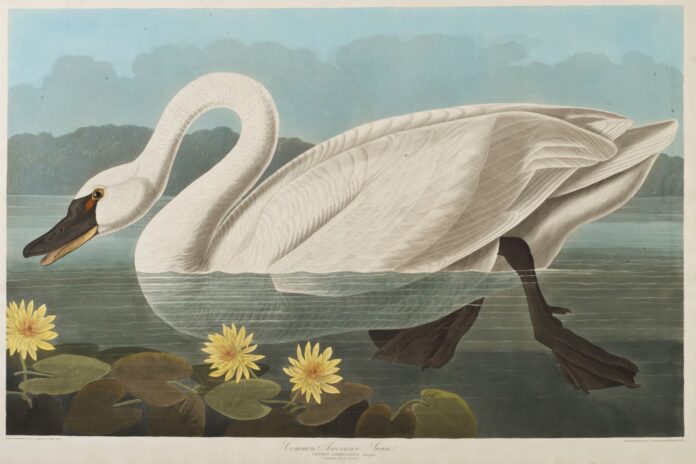The sound of about 100 birds chirping, cooing, squawking and singing will call visitors into Gallery 18 of the Toledo Museum of Art now through Sept. 2, 2012.
The exhibit “For the Birds” is an ode to songbirds and other species as they migrate north from Central America and the Caribbean, stopping along the south shore of Lake Erie to restore energy along the way. Bird lovers come out in droves to witness their landing in Northwest Ohio.
Shortly after Museum Director Brian Kennedy moved to Toledo he discovered the bird action along the lake. Fascinated by the wide array of people who turned out to witness the bird migration, Kennedy said he saw the experience as something “extraordinary to our area.”
To capture that local flair, most of the artwork in the gallery depicts birds that are native to the region or have been spotted here during the migration. A recording that loops bird noises captures the sounds from birds that inhabit the area or have been seen here.
Curator Paula Reich collected the work of 12 different artists for the show. She found most of the pieces within the museum’s own collection, but also brought in prints from local private owners.
When you enter from Monroe Street, the fi rst wall to the right exhibits the “The Garden of Eden,” by Isaak van Oosten. The 17th century oil painting sets a forest scene filled with wild animals, detailed with at least 45 species of birds perching on tree limbs, floating in a pond or standing on land.
“It was a time period when people were becoming really fascinated with the natural world because of the exploration of the New World,” Reich said.
Just next to van Oosten’s piece are the hand-colored lithographs of John Gould, a British ornithologist known for helping Charles Darwin identify birds he found inthe Galapagos Islands.
The five Gould prints belong to Toledoans Nancy and David Kelly. The pair have been avid bird watchers for decades. Years ago when Nancy was bargain hunting through secondhand stores, she found a copy of a Gould print. She read up on the artist and learned about his importance throughout history. She was hooked. She was determined to find originals. She and David have collected at least 15 works by Gould.
“It is not only the subject of the birds we’re interested in; they are artistically done,” she said. “They are a good balance of botanical as well as ornithological presentation and he had an eye for giving a sense of bird habitat.”
The back wall of the gallery includes another artist who labored to perfect habitat: John James Audubon. His depictions of finches, cranes, herons and others are etched with a keen attention to scientific detail.
The other artists’ renditions of birds are less science-oriented.
Ohara Koson, a Japanese artist who lived from 1877–1945, was a master of woodblock printing. His bird artwork pairs the animals with various plants or berries, soaked in contrasting colors that pop from the frame.
Along the adjacent wall, American artist George Benson’s etches are displayed. His pieces are in dark, black-and-white shades. One simply depicts a small bird standing alone.
Two glass cases sit in the center of the room, one of which features etchings of goldfinches by Pablo Picasso. The etchings are part of a special edition volume of a natural history book, originally published by Georges-Louis Leclerc, Comte de Buffon.
Brochures encourage museum-goers to look for birds within art throughout the museum.
“There’s a constant intrigue at their fleeting nature; they’re there one minute, they’re gone the next,” Kennedy said. “But also they can do something I think humans would love
to do be able to do — just take off and view the landscape from on high — it’s wonderfully, pun intended, uplifting. It’s inspiring.”























